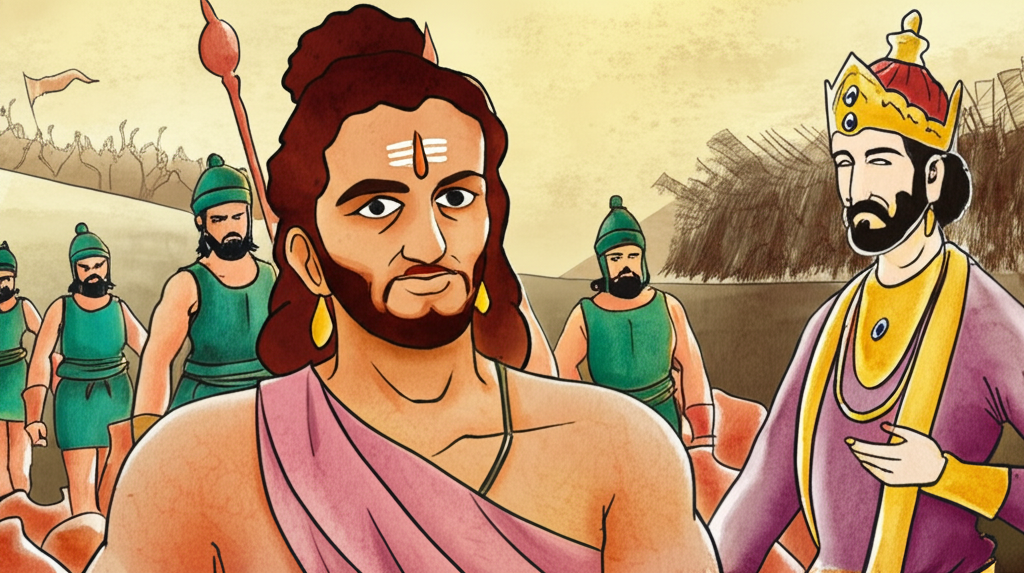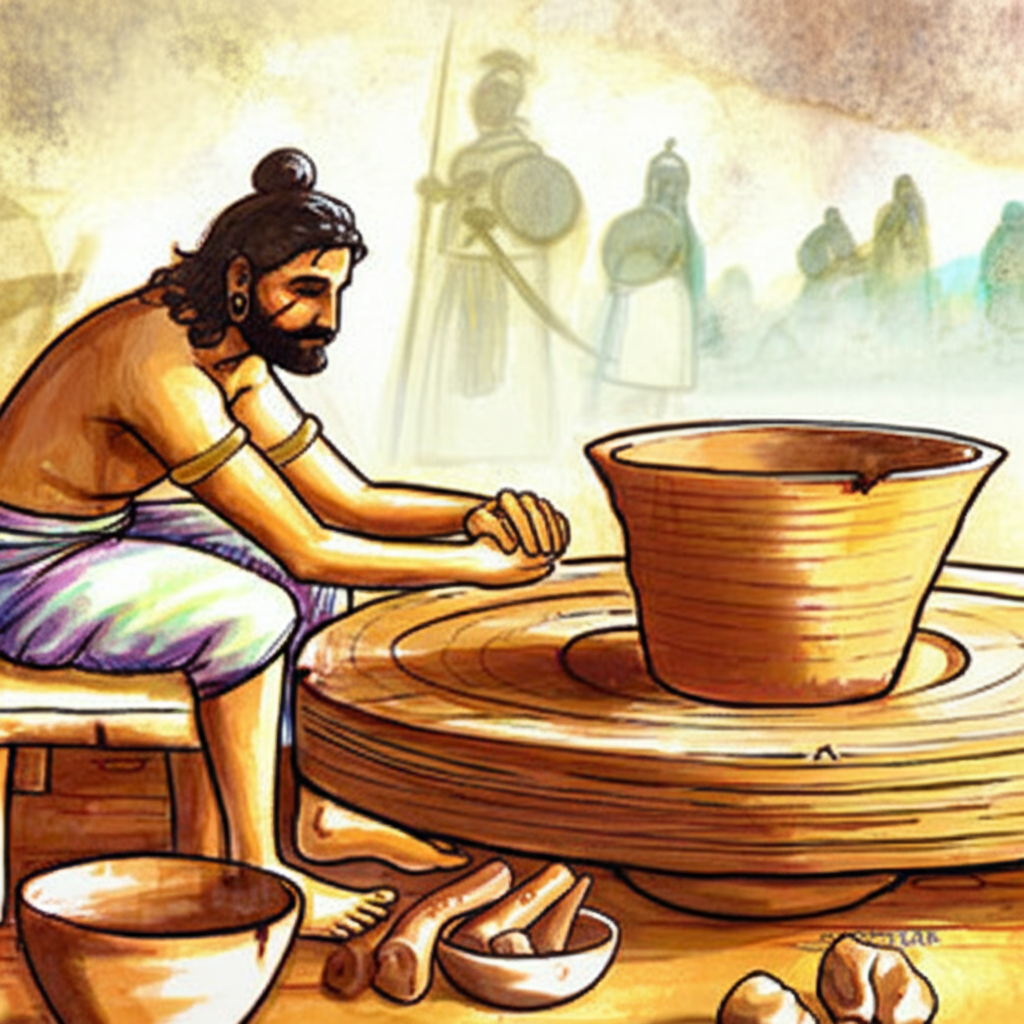
Once upon a time, there was a poor potter named Yudhisthira. He was a kind man, but one night, after drinking too much, he tripped and fell! He cut his forehead on a broken pot. Because he was poor, he didn’t have any medicine, and the cut left a big scar.
A long time later, there was a big famine. Yudhisthira left home to find food. He joined a group of people who worked for the king.
The king saw Yudhisthira’s scar and thought, “Wow, that’s a brave warrior!” He made Yudhisthira a soldier!
The other soldiers were jealous. They knew Yudhisthira wasn’t a real warrior. Soon, there was a big battle. Yudhisthira was scared!
The king talked to Yudhisthira and asked about his scar. Yudhisthira told the truth – it was from falling on some pots!
The king was embarrassed. He told Yudhisthira, “You’re not a warrior! Go home!” Yudhisthira asked to stay, but the king said it was too dangerous. So, Yudhisthira went back to being a potter.

The story teaches us: It’s always better to be yourself!